Introducing Instagram-Worthy Photos of Niigata Prefecture
Niigata Prefecture boasts many attractive photo spots from both natural and historical perspectives. These include Yahiko Shrine, with over 2,400 years of history, Kiyotsu Gorge, one of Japan’s three great gorges, and Sado Island in the Sea of Japan, home to the remnants of a gold mine reminiscent of the “Castle in the Sky” from Laputa.
Yahiko Shrine
Yahiko Shrine is a venerable shrine in Niigata Prefecture, visited by over 200,000 people for the first shrine visit of the year (hatsumode). It is said to have a history of over 2,400 years. The shrine is surrounded by a beautiful sacred forest where you can enjoy nature in all four seasons. It is particularly famous during the autumn foliage season. Additionally, the approach to Yahiko Shrine features a massive 30-meter-high torii gate, built in 1982 to commemorate the opening of the Joetsu Shinkansen. Made of special steel, this torii is impressive in size and presence, and worth seeing.
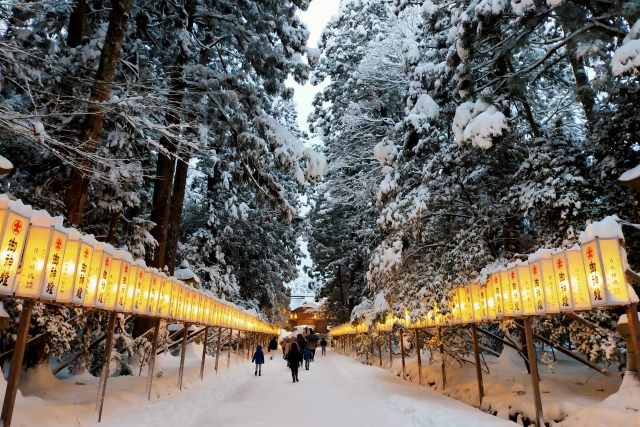
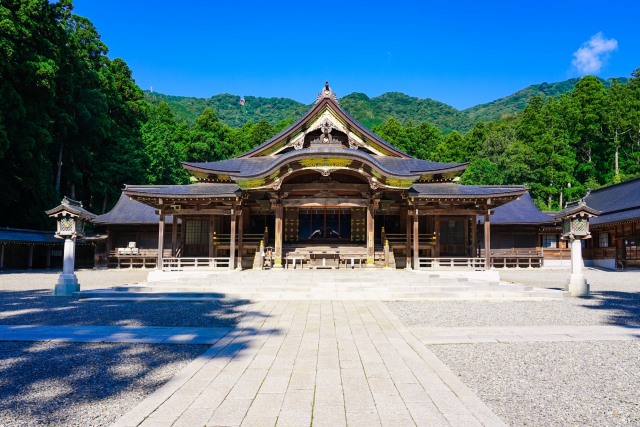
Instagram Worthiness:★★★★★
Photography Opportunity: All seasons
Location Information: ▶Map, Hours, Routes
Transportation Information: 15-minute walk from Yahiko Station
Nagaoka Fireworks Festival
The Nagaoka Fireworks Festival is one of Japan’s three great fireworks festivals, alongside the Omagari Fireworks Festival in Akita Prefecture and the Tsuchiura All Japan Fireworks Competition in Ibaraki Prefecture. It is particularly famous for its gigantic fireworks, such as the 650-meter-diameter fireworks and the 2-kilometer-wide Phoenix fireworks, a prayer for recovery. The festival originated in 1946 as the Nagaoka Restoration Festival to commemorate those who died in the Nagaoka air raid of 1945 and to pray for recovery. The tradition continues today, with the fireworks festival held on August 2-3.
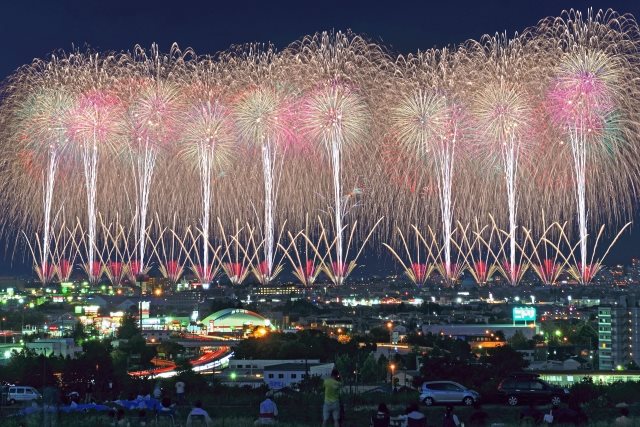
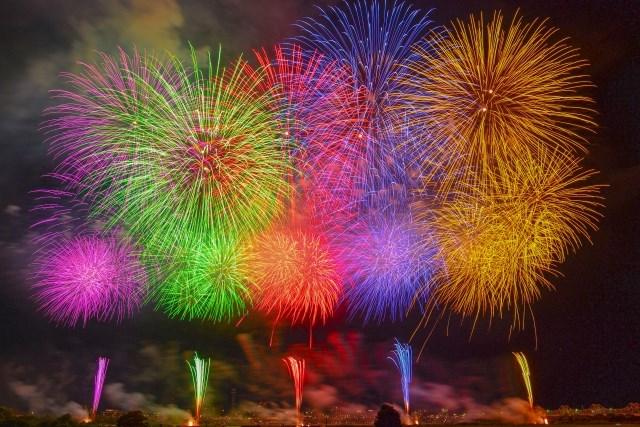
Instagram Worthiness:★★★★★
Photography Opportunity: 8/2~8/3
Location Information: ▶Map, Hours, Routes
Transportation Information: 30-minute walk from Nagaoka Station
Gala Yuzawa Ski Resort
This ski resort is directly connected to the station, accessible in 74 minutes from Tokyo Station via the Joetsu Shinkansen. The station building houses a large rental corner for ski equipment and an onsen facility, allowing visitors to enjoy skiing and snowboarding empty-handed. The three ski areas from an elevation of 800 meters offer various courses for beginners to advanced skiers, and there is a “Yuki Asobi Park” specifically for snow play, featuring a sledding escalator and snow play area, making it safe for small children to enjoy.
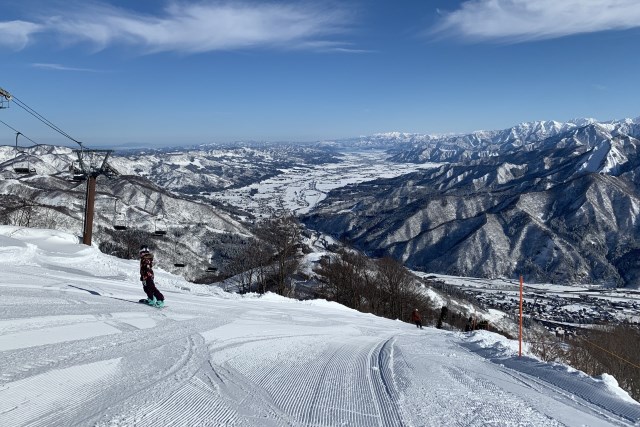
Instagram Worthiness:★★★★★
Photography Opportunity: Winter
Location Information: ▶Map, Hours, Routes
Transportation Information:Gondola from Gala Yuzawa Station
Kiyotsu Gorge
Kiyotsu Gorge is one of Japan’s three great gorges, with high rock walls and the beautiful Kiyotsu River creating an impressive landscape that amazes visitors. In 2018, it was renovated as an art installation by a Chinese architect, creating a unique space using the five elements of nature (wood, earth, metal, fire, and water). The entrance features a footbath, café, and goods for sale, but it is closed during the winter.
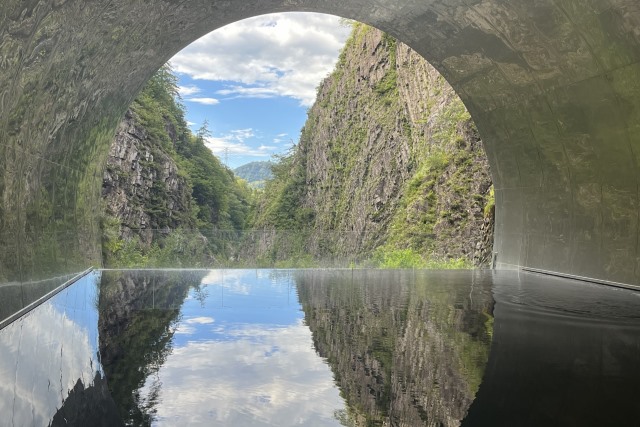
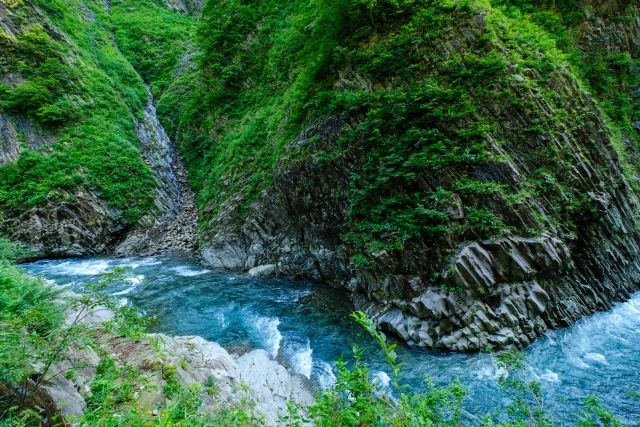
Instagram Worthiness:★★★★★
Photography Opportunity: Spring, Summer, Autumn / Closed in Winter
Location Information: ▶Map, Hours, Routes
Transportation Information: 25-minute bus ride from Echigo-Yuzawa Station
Kiyotsu Gorge Autumn Leaves
The autumn leaves from mid-October to early November are spectacular, with yellow and red leaves creating a beautiful contrast.
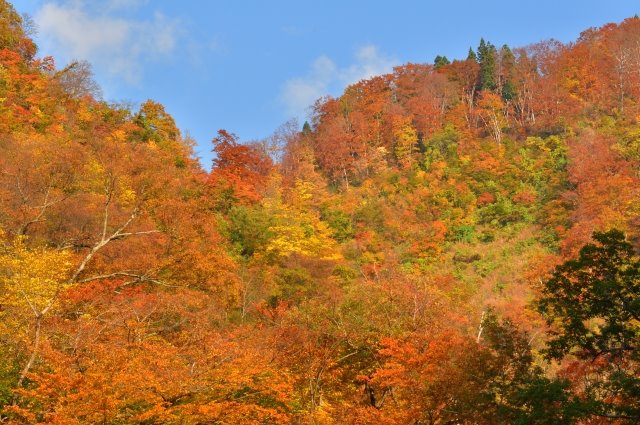
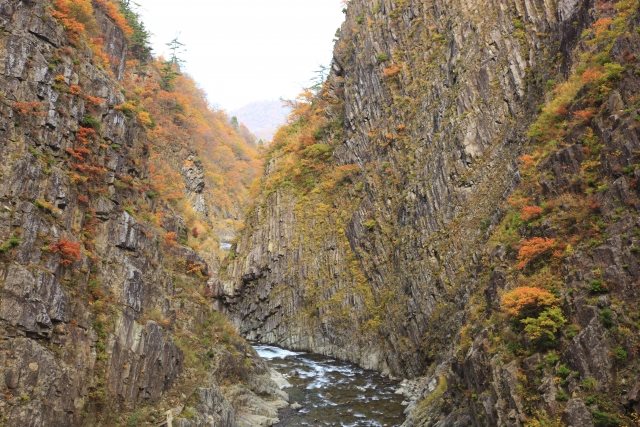
Instagram Worthiness:★★★★★
Photography Opportunity: Mid-October to Early November
Location Information: ▶Map, Hours, Routes
Transportation Information: 25-minute bus ride from Echigo-Yuzawa Station
Kiyotsu Gorge Panorama Station
The view from here is simply breathtaking. It takes just 5 minutes from the parking lot to reach the tunnel entrance, from where you can freely explore. The tunnel is about 750 meters long, with three observation decks along the way offering wonderful views. Additionally, the tunnel features artistic restrooms, ensuring you won’t get bored while exploring. The entire walk takes about 30-40 minutes, but photography at the Panorama Station is very popular, so it’s recommended to go early to avoid queues.
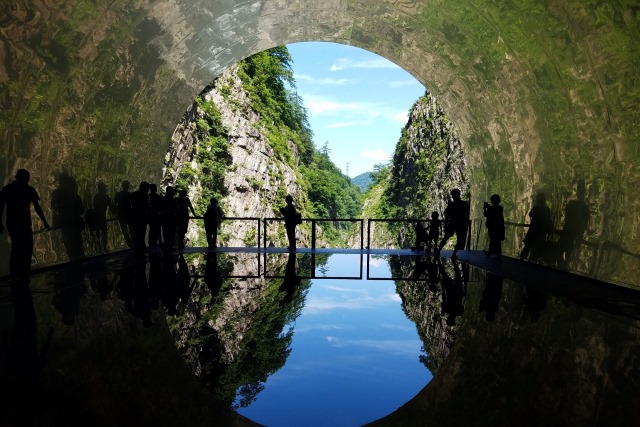
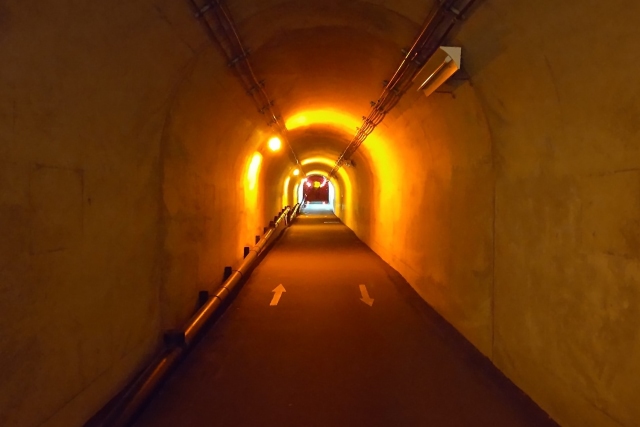
Instagram Worthiness:★★★★★
Photography Opportunity: Spring, Summer, Autumn / Closed in Winter
Location Information: ▶Map, Hours, Routes
Transportation Information: 25-minute bus ride from Echigo-Yuzawa Station
Sado Island
Sado Island, historically a place of exile for many intellectuals and cultural figures, has a unique history where the cultures of nobles and samurai blended. Traditional Japanese performing arts, especially Noh, are very popular here, with the largest number of Noh stages in Japan. The island once produced the most gold in Japan from its mines, which were closed in 1951. The history of these gold mines can still be learned at museums. With its rich history and culture, Sado Island is known as an attractive tourist destination.
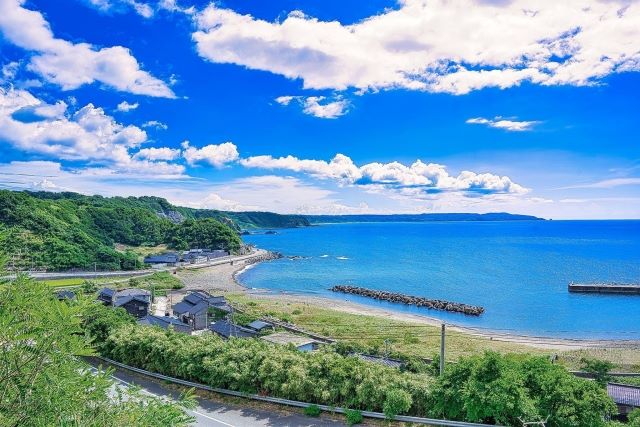
Instagram Worthiness:★★★★★
Photography Opportunity: Spring, Summer, Autumn
Location Information: ▶Map, Hours, Routes
Transportation Information: Infrequent public transportation car recommended
Sado Gold Mine
Sado Gold Mine, opened in 1601, has a history spanning nearly 400 years. It became a direct possession of the Tokugawa shogunate in 1603, supporting the Edo shogunate’s finances through gold and silver mining. Mining operations ceased in 1989, but numerous remnants within the rich natural surroundings have been designated as important cultural properties and historic sites. The total length of the tunnels is about 400 km, having produced 78 tons of gold and 2,330 tons of silver.
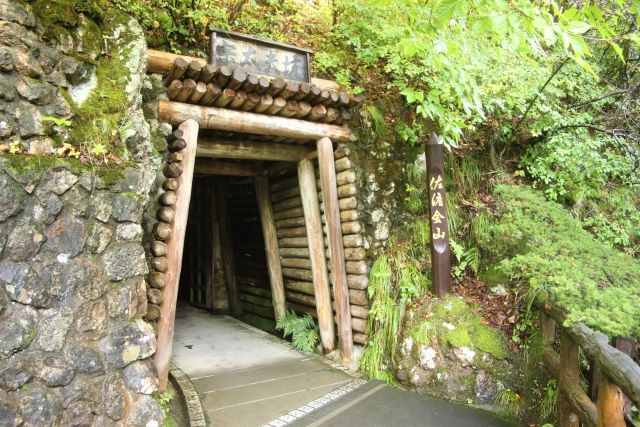
Instagram Worthiness:★★★★★
Photography Opportunity: Spring, Summer, Autumn
Location Information: ▶Map, Hours, Routes
Transportation Information: Infrequent public transportation car recommended
Kitazawa Flotation Plant
This facility was the first in Japan to separate gold and silver ore from waste material. Once considered the best in the East, it is now an industrial heritage site with seasonal lighting and projection mapping, enchanting visitors.
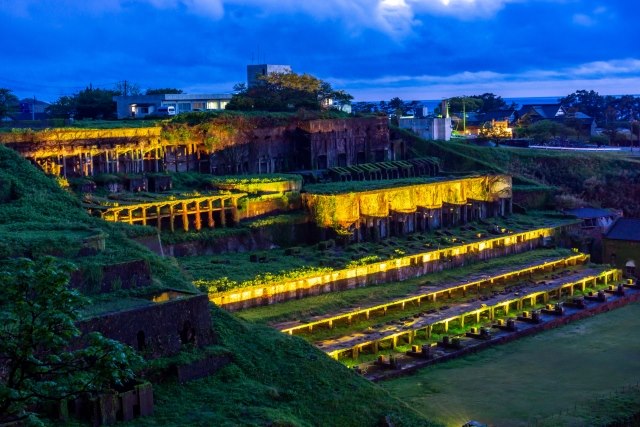
Instagram Worthiness:★★★★★
Photography Opportunity: Spring, Summer, Autumn
Location Information: ▶Map, Hours, Routes
Transportation Information: Infrequent public transportation car recommended
Senkaku Bay
Senkaku Bay, a beautiful scenic spot on Sado Island, is comparable to the fjords of Northern Europe. It consists of five small bays stretching over 3 km of coastline, with towering 30-meter cliffs forming a breathtaking landscape. The area is a marine park with well-developed tourist facilities.
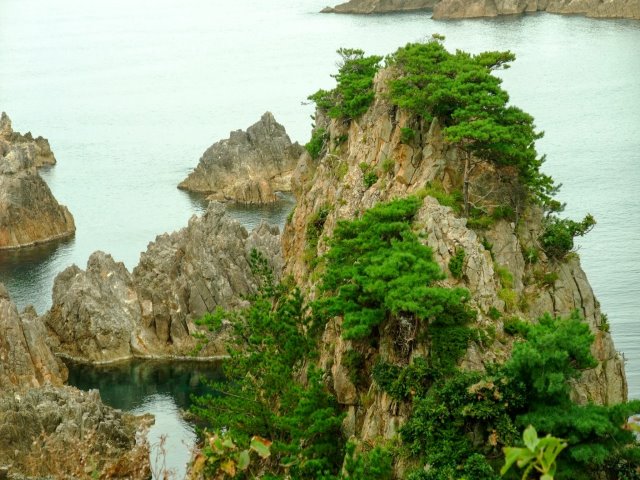
Instagram Worthiness:★★★★★
Photography Opportunity: Spring, Summer, Autumn
Location Information: ▶Map, Hours, Routes
Transportation Information: Infrequent public transportation car recommended
Blue Cave
Ryuo Cave, at the southernmost tip of Sado Island, is the largest marine lava cave on the island. On sunny days, the sea glows a beautiful blue, earning it the name “Sado’s Blue Cave.” Currently, due to surrounding landslides, it can only be visited on guided tours.
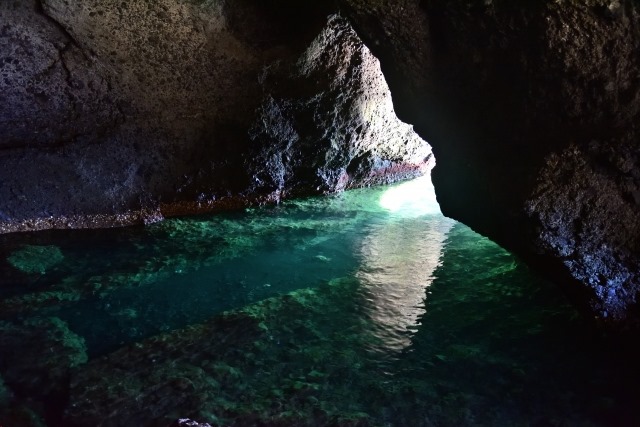
Instagram Worthiness:★★★★★
Photography Opportunity: Spring, Summer, Autumn
Location Information: ▶Map, Hours, Routes
Transportation Information: Infrequent public transportation car recommended
Meoto Iwa
The Meoto Iwa of Nanaura Coast consists of two massive rocks, with the husband rock standing 22.6 meters high and the wife rock 23.1 meters high. These rocks, standing close together as if embracing, are widely believed to bring good luck for marriage.
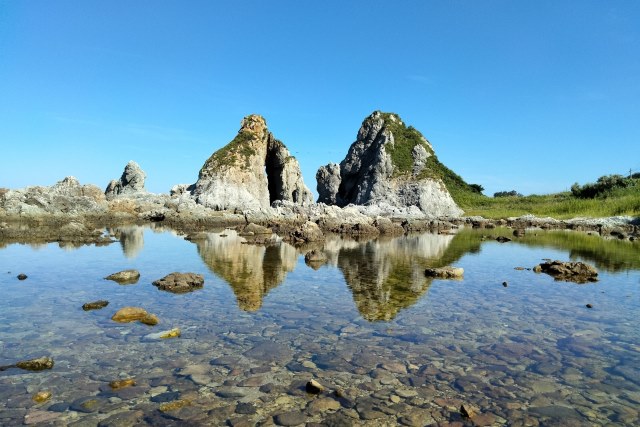
Instagram Worthiness:★★★★★
Photography Opportunity: Spring, Summer, Autumn
Location Information: ▶Map, Hours, Routes
Transportation Information: Infrequent public transportation car recommended
Japanese Crested Ibis
The Japanese crested ibis (Nipponia nippon) is a rare bird protected in several countries, including Japan. Once on the brink of extinction, its population has been recovering thanks to conservation efforts. Found in China, Japan, and Korea, the Japanese crested ibis has been reintroduced to Sado Island through artificial breeding since 2008, with its population steadily increasing.
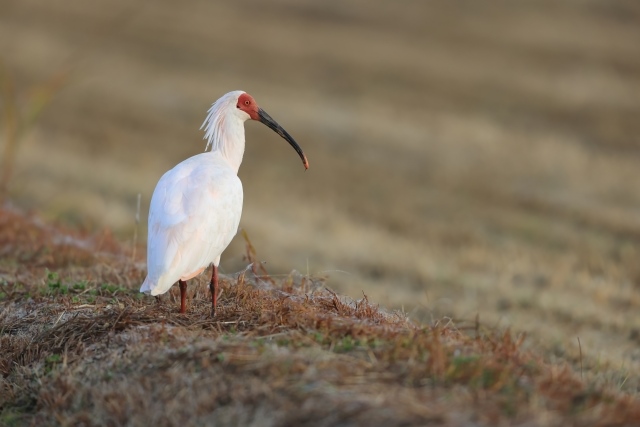
Instagram Worthiness:★★★★★
Photography Opportunity: Spring, Summer, Autumn
Location Information: ▶Map, Hours, Routes
Transportation Information: Infrequent public transportation car recommended
Sado Oni Daiko
Oni Daiko is a traditional Shinto ritual combining demons, lions, flutes, and drums to pray for a good harvest, bountiful fishing, and household safety. This ritual is still performed in about 125 villages, each evolving uniquely, making no two Oni Daiko the same. The festivals are mainly held in spring and autumn, particularly on April 15 and September 15.
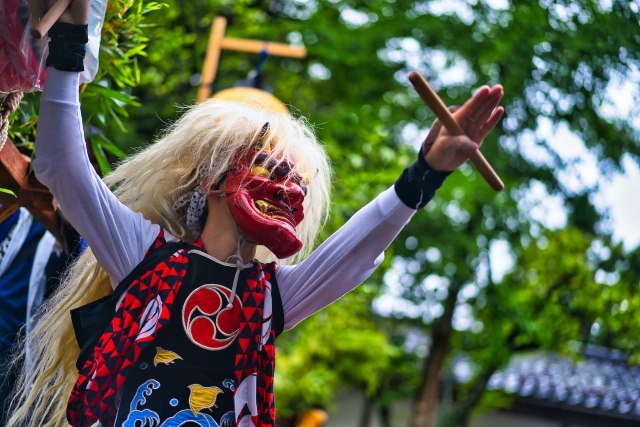
Instagram Worthiness:★★★★★
Photography Opportunity: Spring, Autumn
Location Information: ▶Map, Hours, Routes
Transportation Information: Infrequent public transportation car recommended
Tarai-bune
Tarai-bune is a type of boat devised between the Edo and Meiji periods in response to earthquakes altering the landscape. The earthquake-created rocky reefs and small coves became rich fishing grounds for shellfish and seaweed, but traditional boats struggled. Thus, the tarai-bune, modified from a washing tub, was developed for its maneuverability and stability. It is still used for fishing on the Ogi Coast of Sado Island, and tourists can experience riding it.
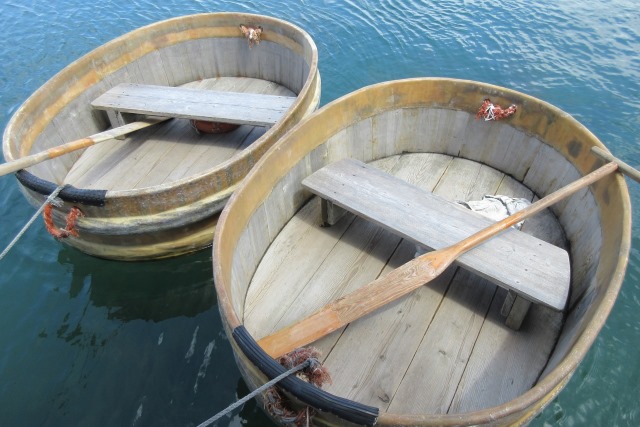
Instagram Worthiness:★★★★★
Photography Opportunity: Spring, Summer, Autumn
Location Information: ▶Map, Hours, Routes
Transportation Information: Infrequent public transportation car recommended
Ameya Pier
This pier, reachable by car in about 30 minutes from Ryotsu Port, is a popular photo spot with stunning views of the sea. It is recommended for those who want to take Instagram-worthy photos.
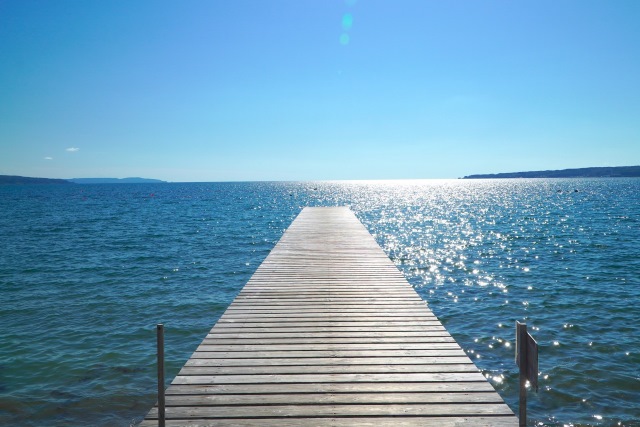
Instagram Worthiness:★★★★★
Photography Opportunity: Spring, Summer, Autumn
Location Information: ▶Map, Hours, Routes
Transportation Information: Infrequent public transportation car recommended
Otoike Pond
Located near the Ohira Highlands on the Osado Skyline, Otoike Pond is a mystical natural pond. It features one of Japan’s largest floating islands, home to over 20 species of plants. The heart-shaped hole in the floating island adds to its romantic atmosphere. For those renting a car, it is recommended to stop by during your drive.
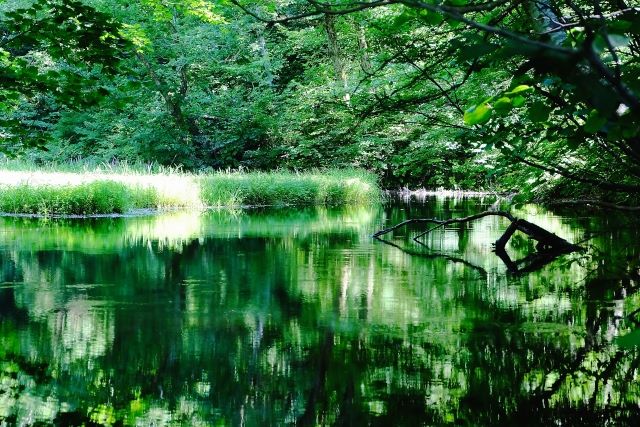
Instagram Worthiness:★★★★★
Photography Opportunity: Spring, Summer, Autumn
Location Information: ▶Map, Hours, Routes
Transportation Information: Infrequent public transportation car recommended


